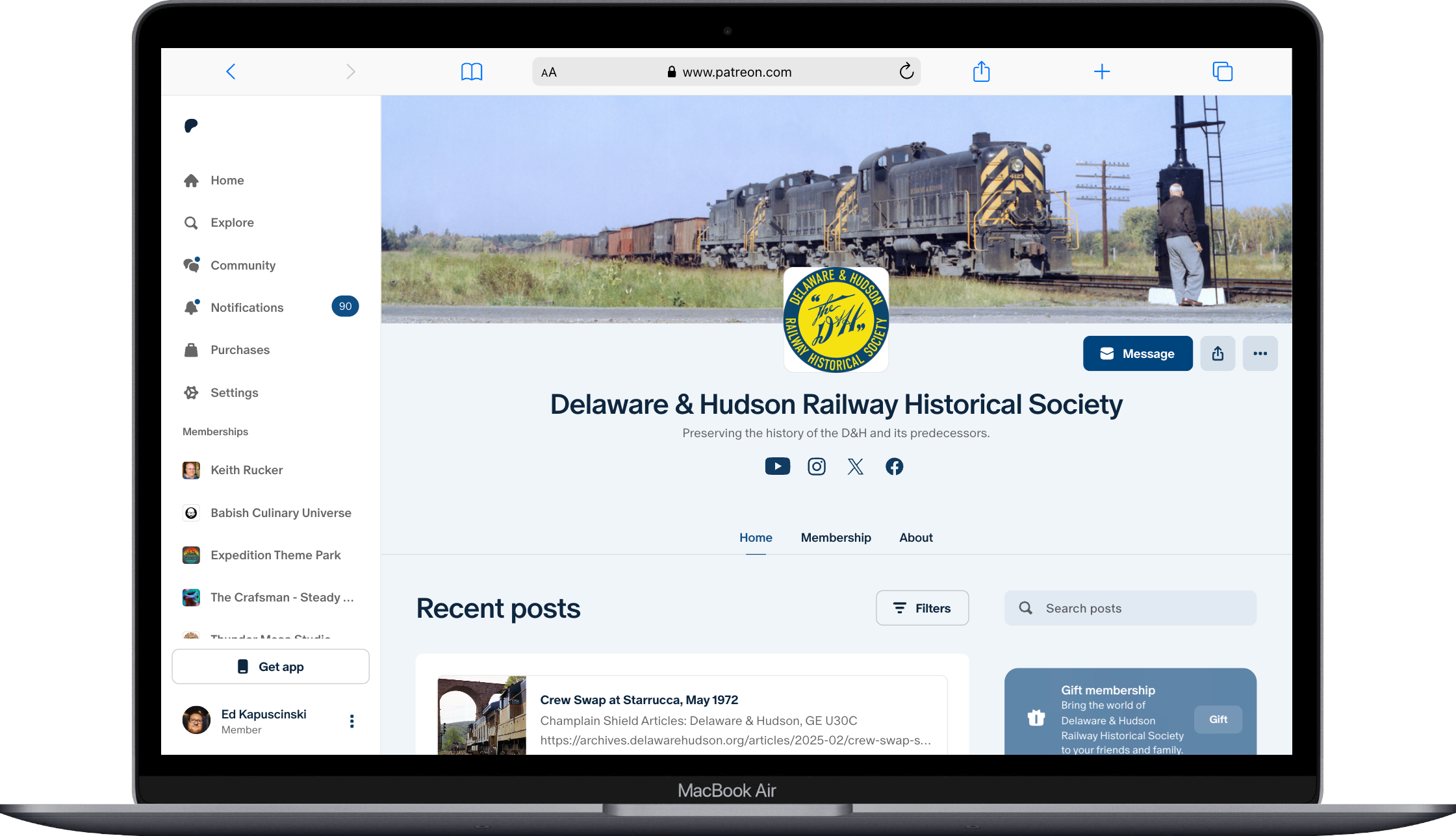
The D&HRHS is the world’s first “Digital First” Railroad historical Society.
We Have reimagineD what a railroad historical society is for the modern world.
It’s 2025, and many existing Historical Societies are struggling to keep doing The same Things That they have been doing for years.
We’re doing something different: building an organization from the ground up, Based around the way people Live and interact with content in the digital world.
We don’t have a Printed magazine and we don’t have annual dues… but we do have amazing D&H content and an ALCo RS3!
what Digital First MeanS
A New Structure For Historical Societies
Historical societies typically fall into a standard pattern: they have annual dues and publish a print magazine or newsletter that’s mailed to members.
Ed Kapuscinski, while working with the Nickel Plate Road Historical & Technical Society’s strategic planning committee, realized that this wasn’t a model that was going to be easy to sustain. He developed a plan for what a modern historical society would look like if it were started now.
The D&HRHS was just getting started at the time and decided to adopt this model.
Instead of publishing a magazine, we publish our content directly to the web. Instead of having annual dues, we use a modern content creator support platform to sustain us with monthly subscriptions. Instead of waiting for an annual convention, we use online tools to allow our members to communicate at any time day or night.
That doesn’t mean we won’t do some things other historical societies do (we have preserved a locomotive, after all), but we’re going to put digital experiences at the heart of what we do. This makes it easy for our members and ensures that we get to keep preserving the D&H’s history well into the future.
Our Technology
-

Main Website
Our main website serves as an information portal about the Society. It is the tool we use to tell the world who we are and what we do, and it is the main landing location for new visitors or prospective members.
This website is built and hosted on Squarespace. Squarespace provides an easy-to-use platform to create a modern website with compatibility across all devices (computers, tablets, phones, etc.). Squarespace requires little technical knowledge to maintain, making it easy to get started and keep going.
-

Archive Site
Our archive site is where we share our collection of content on the D&H’s history. It’s where we make available our archival collection of D&H artifacts and our flagship publication, the Champlain Shield.
We use the Drupal web content management system, a widely-used Open Source platform that provides flexible options for varied user access. This is key to how our members can view our content based on membership level. Drupal has a huge community behind it, making it easy to support and sustain.
-

Collection Catalog
We use a Google Sheet as the “system of record” for our catalog. As part of our Google Workspace, it is easy for multiple volunteers to work simultaneously with the data that it contains. Information stored in our catalog is imported into our Drupal archives site to make it accessible to our members.
Binary files (like images and pdfs) that represent the items in our catalog are stored in AWS S3 buckets, as they are a convenient and cost-effective way to store and access volumes of large files.
-

Collection Processing Infrastructure
We’ve developed a number of handy online tools to tie together our collection catalog and public-facing archives site. These tools also facilitate the process of members contributing digital files directly to our archives, allowing us to essentially crowdsource and make available material that we do not physically possess.
These tools were developed using Vercel’s v0.dev generative AI tool. The contributor upload portal gives our members a way to easily send us files and information, while our “DHRAIP” system automates the image and data processing. This processing allows us to combine the data from Google Sheets and the associated files from our AWS S3 buckets into our public-facing Archives site.
-

Patreon
A historical society, even a “digital first” one, relies on membership. This membership serves as both our primary audience and our financial supporters.
We use Patreon, an extremely popular subscription tool for digital artists and creators, as our membership management tool. It makes it easy for people to join our Society, and it’s easy to integrate with our other tools.
One of the biggest benefits of using Patreon is that it aligns with the modern way that people support and follow different digital creators. While this is essentially what our Society is, it reshapes the way that our members are able to interact with our content and makes it familiar and accessible to modern users.
-

Discord
Member communication, both from the society to its members as well as between them, is a key part of the services a historical society provides.
We use Discord to provide this service to our members. We chose Discord because it is a widely used and proven service, has the functionality we wanted, and easily integrates with the rest of our tools for a seamless membership experience.
Discord, like Patreon, is an integral part of the digital creator space, largely replacing message boards, forums, and email lists. By making our content and communications available here, we are making our Society available on a familiar platform for modern users.
The Bottom Line
We’re digital first because we wanted to create a long-lasting, modern historical society that’s easily accessible to members in the digital era.

